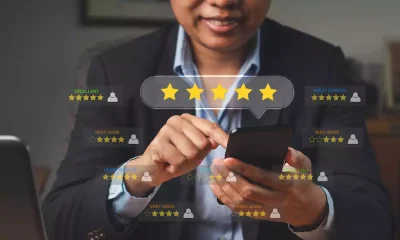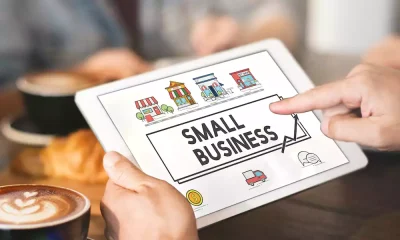Accounting & Finance
Loyalty Programs vs Reward Programs

Statistics indicate that businesses generate most of their sales through their existing customers. Even more striking is that it is significantly more expensive to attract a new customer than to retain an existing customer. That’s why businesses spend so much time and effort maximizing returns from existing customers through loyalty and reward programs.
A proactive approach is the best method for driving sales without seeking new customers. There is no doubt that customers love to be rewarded for their patronage; this is the best way to build a rapport.
Loyalty programs differ from VIP programs and reward programs. Loyalty programs don’t matter the purchase amount; what matters is that a customer continues to give business to the company and is rewarded with specials and discounts. Loyalty programs abound in the retail marketplace. Notable examples of innovative customer loyalty programs include the following:
Innovative Customer Loyalty Programs
Starbucks Rewards
The Starbucks app is one of the most successful examples of a loyalty program that really works. My Starbucks Rewards highly effectively rewards loyalty with coffee connoisseurs and Starbucks aficionados alike. Customers don’t need to have any loyalty cards punched. You need to transact via the Starbucks app, and you will be rewarded for your patronage.
Rewards options include customized drinks like espresso shots, dairy substitutes, syrup, and more; brewed hot coffee, a bakery item, or hot tea; handcrafted drink, breakfast, or parfait; lunch sandwich, protein box, or salad; and select merchandise or at-home coffee.
Amazon Prime
North America’s premier e-commerce platform, Amazon, ranks highly in the membership rewards arena. Amazon Prime is a membership program with an annual fee. Customers can access unlimited 2-day shipping options, Prime Day Sales, and streaming services.
Amazon Prime customers reportedly spend 400% more than standard Amazon customers, making this exclusive membership program highly profitable.
Apple
Apple is the world’s most valuable company and boasts a devout customer base. Apple users are so fanatical about their products that they will not look elsewhere for substitutes. Apple maintains customer loyalty by remaining at the forefront of technological innovation. The company’s loyal following is based mainly upon the exceptional quality of its products.
The Apple experience is peerless, and Apple’s rewards program, although limited, offers loyal customers complimentary subscriptions to Apple TV, with other value-added services in the works.
The efficacy of rewards and loyalty programs has proven extremely valuable in recent years. The objective in all cases is multifold: inspire customer loyalty, value for the customer, and increase retention. Having said that, there are notable differences between rewards programs and loyalty programs.
In the travel and tourism, rewards programs target customers seeking credits for future purchases. Rewards benefits function similarly to cashback. Loyalty programs, by contrast, are geared towards customers who are already loyal to a brand, even when more cost-effective, convenient, or comfortable options are available.
Clearly, loyalty programs cater to exclusivity, an intangible bond between the customer and the company.
What does It Take to Launch an Effective Loyalty Program?
Businesses routinely explore all of their options regarding loyalty and rewards programs. True to form, these programs are exciting for businesses and their customers.
It is worth pointing out that there will be challenges along the way. These can include technical issues, implementation and adoption of the new program, and customer confusion.
The priorities for starting a loyalty program are focused on the customer and how he/she will respond to the program. In this vein, there are 3 things to consider, including the following:
1. Quick and easy registration
Customers do not want to muddle their way through lengthy registration processes, submissions of documents, or navigating in and out of websites.
2. Provide lots of valuable offers
Customers will not be tempted by a limited supply of offers they don’t find interesting or valuable. Go big or go home.
3. Staff and support training
Customers will be horrified if staff and support know nothing about the loyalty program they are a part of. It’s the quickest way to abandonment. Train your staff and customer support to maximize the benefits.
So, how do you choose between a rewards program or a loyalty program?
Choosing The Right Program For Your Customers
Businesses tend to pour over the merits of choosing between rewards or loyalty programs. The first step is due diligence in careful and methodical research. The right questions need to be asked, such as who are the customers and what motivates them.
Truth be told, customers are looking for much more than coupons and discounts from their loyalty programs. Industry analysis reflects that the typical customer is part of 15 loyalty programs.
Statistics reveal five broad categories of rewards programs, and they are all about meeting these customer needs.
The customer:
- is a valuable asset to the business
- can save money
- knows the company cares about them
- can have a seamless shopping experience
- wants to have a hand in choosing their rewards
Loyalty programs must be designed to meet customer expectations, with value derived from the connection between the business and its customers. Attentiveness, support, and the overall experience are integral in fomenting a valuable loyalty program.
Unsurprisingly, most high-income earners (71% + of people earning $100,000 + per annum) are already enrolled in loyalty programs. Some 76% of those people value loyalty programs vis-a-vis their relationships with those brands.
3 of every 4 US-based companies generate positive ROI on loyalty programs, and studies show that a 5% increase in customer retention can increase profits by up to 95%. The litmus test of a successful rewards program is evident from its impact on existing customers versus new prospects.
The probability of converting an existing customer is as high as 70%, while converting a new prospect is only as high as 20%. Given that existing customers spend almost 67% more than new customers, targeting customer loyalty programs to drive growth makes sense.






